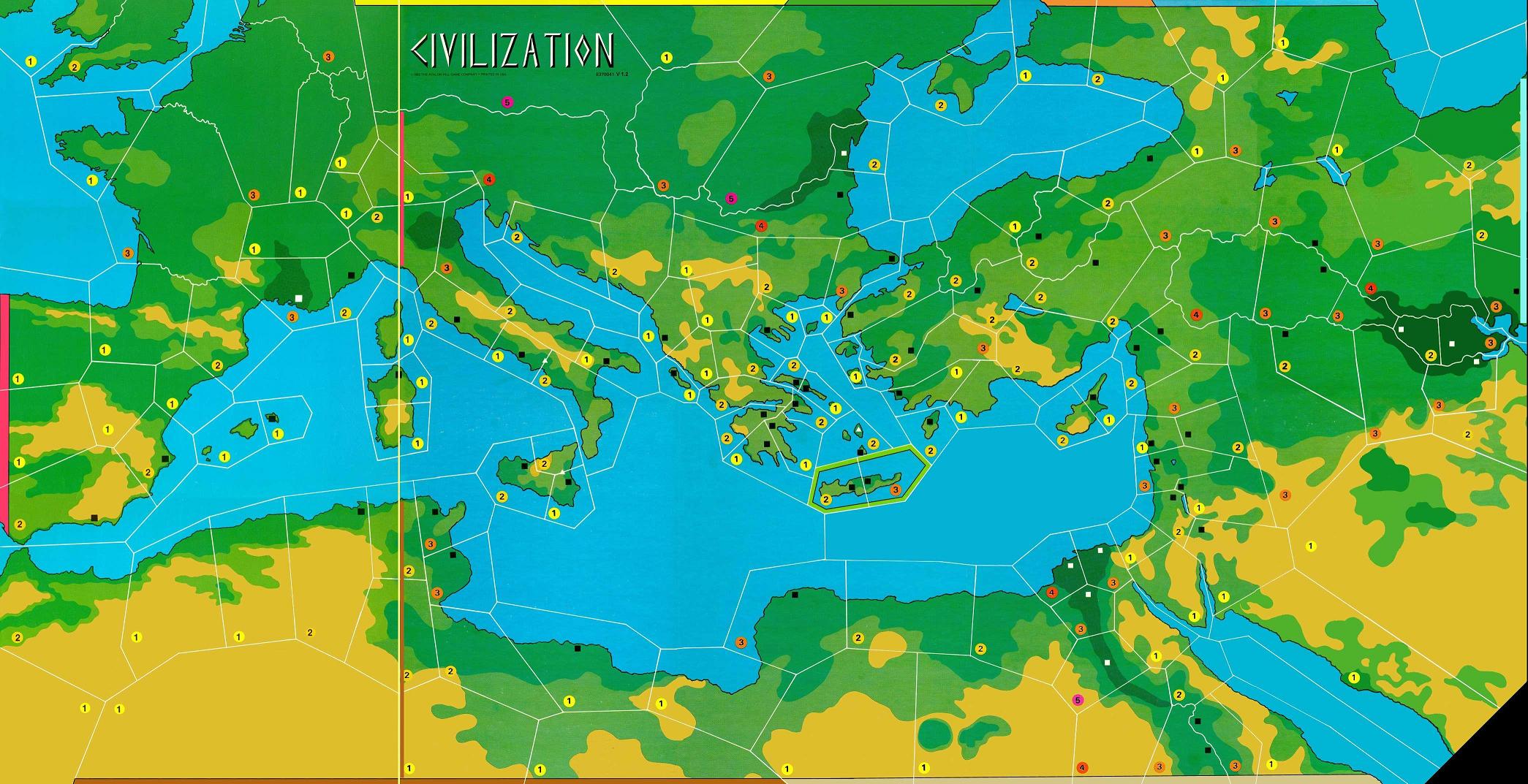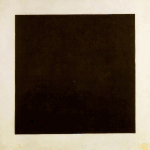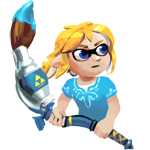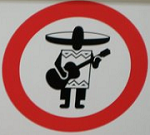|
Gutter Owl posted:tl;dr I need help finding body horror scenario ideas for my horror game, but specifically ones that can carry meaning (esp queer meaning) beyond eep spooky monster. Hrm. Not sure how workable this one would be in play and it overlaps some with the existing clone scenarios, but something like: I Don't Know Who I Am Anymore You place a second girl somewhere. One of you is real; one is fake. The Community player draws a randomizer card to determine which is which; you do not get to know. Whatever clues the Community gets to your location reveal which girl is which in a way that they can distinguish but you can't (color coded or some such, e.g. "Red Girl is at location X") You control both girls, but if the fake girl escapes or gets sacrificed, the other player wins. You get twice as many resources to work with, but your odds of victory are only 50/50 unless you can win a complex game of chicken to try to provoke the Community into revealing which girl they're actually after.
|
|
|
|

|
| # ? Apr 30, 2024 08:00 |
|
Hi folks, I wanted to share a tabletop skirmish game (miniatures agnostic) that I've been working on. I've worked hard to make it as simple as possible, while still being challenging and rewarding clever gameplay. The main game is available in DOCX or PDF, and there are separate print-out card sheets for Magic Items, Paths to Victory (win conditions) and Deployments. Features I'm excited about are:
When I've played the game, however, there's been things that feel flat:
I'd love it if anyone had a chance to take a look and share your thoughts - especially on the things I'm struggling with. Or if you don't have a chance to read it, I'd like to hear about anyone's experiences with the FireCore games (Five Men in Normandy, etc.) on which I've based the Kill/Shock dice mechanic and your thoughts on why it works there.
|
|
|
|
I'm working on a hex-based engine-builder game. Some of the hexes can produce a type of resource. There is currently 3 different resources occuring on the board. Their rarity is controlled by tweaking their occurence and distance on the map. Each resource hex also has a yield rate (modest, generous, rich) which determine the odds of producing a resource of the given type on the hex. Each yield rate corresponds to a die that needs to be rolled, with increasing odds of getting one ore more tokens of the given resource. These resources can be spent to purchase structures, unlock new actions or upgrade existing actions/structures, which all contribute to gather different resources at improved rates. My question is about the internal economics of the game, how to make the resources each feel unique and the costs feel balanced and rewarding. Is there an exisiting algorithm, some spreadsheet wizardry or a general rule of thumb to go about balancing this?
|
|
|
|
Your costs are likely going to be dictated by the rate of ramp that you want. Figure out how many turns you want to take to reach various milestones (this is going to have to be an average due to the random nature of your resource collection, limiting how tight the balance can be) and base your costs on that. This will probably take some trial and error iteration to get right; maybe it turns out that such-and-such buildings are too broken if you can get them reliably before turn 6 or what have you and need the cost jacked up, etc.
|
|
|
|
So this is a game I've more or less made to help with teaching kids brazilian jiu jitsu. There are a few decent card games (Jiugo & Combatch) that are in the niche of BJJ but mainly are meant for adults/people who know what BJJ is. So i thought I'd try to make a print-n-play game focused for kids to play with, or event new adults to the sport, and just help them retain/remember different moves/techniques in a simple and easy to understand game format. Part of that is also because I'm outside of my home country doing ESL and so all my kids bjj students are also learning English so this is meant to help double tap those two things: easy to understand/play off the bat, help retain/learn the names of moves. I'm posting here because I'm more or less at the playtest phase and am doing the "52 player card" approach to the game and would like some feedback on the mechanics. At the moment they're, well, incredibly simple/basic and I want to keep it as simple to comprehend and easy to pick up but not so simplistic its just a boring as hell game to play. I've played a few test games and it works well but I may be too close to the game to be a decent critic of it.  
|
|
|
|
What are some solutions for tracking health for combat that requires fairly large health pools for PvE enemies? I have an idea for a combat system that I think is interesting, but it would result in players playing 3-5 cards per turn, each card dealing 1-3 damage. That's like 10 damage a turn per player! Ideally I'd like there to be boss characters that take multiple turns to kill that players need to team up to kill, but that requires tracking 100+ hit points. Some d10s or a poo poo load of counters would technically work, but would be sloppy design and fiddly to handle. Giving the enemy armor / defense to reduce damage might work, but if players can't get enough damage to overcome that value, they may as well not attack at all. I guess writing this out, maybe the answer is to have armor that reduces damage by 1-2 per card? So most cards would do no damage unless you could beef them up. Though that might feel kinda lovely. CodfishCartographer fucked around with this message at 09:58 on Dec 18, 2021 |
|
|
|
FFG-style double dials.
|
|
|
|
CodfishCartographer posted:What are some solutions for tracking health for combat that requires fairly large health pools for PvE enemies?
|
|
|
|
Splicer posted:Multi stage bosses keep the amount of damage to be tracked at one time pretty low and also lets you do some fun tricks. This is your answer. Keeps the fights from getting stale and tracking only one phase at a time makes it managable. You then also get to make bonus actions or whatever on "phase shifts" and generally open up your design into a familiar space from a bunch of other games you'll have played that you can draw inspiration from. Calculate how much damage an average turn is and make each phase have a little more than 2 turns worth of health so that your players can feel like they squeezed out an attack.
|
|
|
|
Instead of or in addition to multiple phases, you can have bosses made of multiple pieces, and track health independently on them. Big hits can take out a whole piece, and small hits can target and accumulate on one piece until it's dead. You can combine that with the armor idea and have say one piece which is the "shell", which provides damage reduction on the other pieces until it's destroyed, but itself has no damage reduction.
|
|
|
|
I've played a TTRPG using playing cards for monster HP (and everything else, really). Say you hit for 15: you might reveal a 4, then a Q, then an 8 and replace with a 7 from the discard pile (face cards all 10). Wouldn't really work if you don't have the easy shoe full of discards, though - don't want to have to search a deck and reshuffle for that 7. Added benefit / detriment of not knowing exact HP. Also writing numbers is a real thing that works but some people are opposed.
|
|
|
|
I designed a game called Malady where one of the classes (the Exorcist) used a deck of cards instead of dice to deal damage and cause debuffs on the monster. The player drew two cards from their deck each turn and had three face up in front of them, representing the debuffs they were enacting. Every turn they needed to replace one of the face-up cards with one of the ones they drew, meaning other players had to take advantage of whatever cards were up that turn. There were also "Heresy" cards which amplified the effects of other face-up cards but dealt the character damage every turn they were up. In playtesting people really seemed to like it, it's a shame about the rest of the game lol
|
|
|
|
A publisher took the name "White Hat" so I'm renaming my current prototype project. Currently this is what I'm considering: I'd love to hear some thoughts on it.
|
|
|
|
Frozen Peach posted:A publisher took the name "White Hat" so I'm renaming my current prototype project. Currently this is what I'm considering: Looks dope. "Blue Team" will be recognized by IT professionals who have some exposure to modern corporate security practices, but isn't going to have the same immediate recognition that "White Hat" would. I don't think it'll matter?
|
|
|
|
Blue team will lead people very slightly towards military friend or foe, halo teams, that sort of thing. I think blue is generally "the good guys" in people's minds? Seems good to me.
|
|
|
|
|
silvergoose posted:Blue team will lead people very slightly towards military friend or foe, halo teams, that sort of thing. I think blue is generally "the good guys" in people's minds? Seems good to me. "Blue Team", "Red Team", and "Purple Team" are used in the corporate cyber-security world to describe teams and team exercises around defense, penetration, and collaborate efforts.
|
|
|
|
Main problem with "blue team" is my game is more about completing bug bounties than pen testing and blue team work, but the idea is pretty much there. I'm nitpicking pretty hard, but otherwise I'm liking it. I'm also spending most my design time trying to polish the "black hat" (now a named hacker called "sine_nomine") - it's an AI that acts as the end game timer and the primary foe for the players to be working against. I think I finally got it balanced so it doesn't just focus on easy to find vulnerabilities, and is thematic as well. Definitely needs testing though. Hopefully going to do some playtesting soon. I was supposed to have Geekway Mini this weekend, but that got postponed til February, but maybe I can find a play test group anyways.
|
|
|
|
I made a simple single-player farm-themed puzzle game designed for elementary school students - this isn't meant to be published or used anywhere, the pixel art is mostly lifted from Harvest Moon or Stardew Valley, I just recolored it. Our lessons were remote so it was designed as a set of A4 printouts - the kids received a grayscale version of everything, but I colored my examples digitally.    The setup is extremely simple - I would just place two tiles as a starting point, and the students would have to derive a solution to the puzzle that accomodated the starting pieces. It took a bit of trial and error, as it WAS possible to create an unsolvable problem, but those were rare. If I had more time I'd refine the rules a little more, this certainly isn't the most elegant form of the game possible. Most solutions tend to group and animals and plants on opposite sides of the board, so there's certain patterns that repeat more often than others, but with different setups you can force more creative solutions. Anyway, the whole exercise of coming up with the rules was really fun, might dabble more in the future. McKilligan fucked around with this message at 13:11 on Jan 7, 2022 |
|
|
McKilligan posted:I made a simple single-player farm-themed puzzle game designed for elementary school students - this isn't meant to be published or used anywhere, the pixel art is mostly lifted from Harvest Moon or Stardew Valley, I just recolored it. Our lessons were remote so it was designed as a set of A4 printouts - the kids received a grayscale version of everything, but I colored my examples digitally. I may have missed it in your explanation, but it it correct that there's exactly one of each tile? You have a small text error (the pig's text is missing a 'to').
|
|
|
|
|
Osmosisch posted:Very cute! I like it a lot. Aww damnit, I always miss something! But yes, there's only ever one of each tile, a total of 9. There's no duplicates.
|
|
|
|
On that note, if anyone needs their rules/components proofread, I'm always happy to do so for hobbyists! PM or mail me (username at gmail). I've got a local game design group where I also provide this service so even though I'm not a professional, I've had plenty of practice.
|
|
|
|
|
Hi thread, a kind goon in the ancient history thread pointed me in this direction because I posted about a game I've been working on as a hobby to do something constructive in my (limited) free time. That is a great OP, xopods; I love and appreciate that someone is aggregating all that information and there is a thread here to talk about game design. I'm sure I'll be posting more when I get the chance, but I figured I would toss this out there as a website I found that looks to be a game-maker's resource: https://www.boardgamesmaker.com. I have not used it yet but I may use it to print a map and some chits for one of the games I am working on simply because a having a physical copy of a project I've been working on, off-and-on, for a couple of years would be exciting.
|
|
|
|
I'm soliciting playtesters for A Crystal Ship:nomadotto posted:Quick Game Pitch: If that sounds vaguely interesting, shoot me an email or PM. Playtesting is taking place over Tabletop Simulator.
|
|
|
|
Hi thread, I'm new here and the thread has been pretty quiet the past few weeks but I want to post about a game I am working on, so here goes. I've read the op but let me know if I do anything wrong or anything like that. The goal of this post is to share my basic outline of, and a map for, a board game idea I have to solicit some basic feedback and to see if any vets of the game that provides inspiration have any thoughts. I'm a huge fan of "Tresham Civ". I played it a ton in the 2000s and still have many fond memories. A basic breakdown for those unfamiliar: Each player starts the game with 1 pop token in the year 8,000 BCE; the game spans through to ~250 BCE. Every turn, each pop doubles, up to two per region. Eventually players start consolidating 6 or 12 pops into one region to build a city, which they can have up to 9. Players have to compete and/or negotiate for land to make sure they have the room they need for their pops and their cities. Combat between players is simple - to attack, one player moves pops into a region owned by another player; they then take turns removing a pop until they cohabitate in the region (the combined number of pops left equals what can be supported in the region) or all pops of one player are removed (this means no dice, which I love because dice hate me). Each city provides a trade good - you get a 1 value trade good for one city; a 1 and a 2 value for having two cities; a 1, 2, 3, 4, and 5 for having five cities, so you want to get to nine cities for the highest value cards. Each turn players take a break from being the god emperor of their civilization to trade I would love a modern version with a faster play time and a sane-r map. I've been working on a number of board game ideas for a while and I've used them to try to teach myself some different skills; I decided it was time to learn "The Free Photoshop", GIMP, so I decided to teach myself GIMP by making a map for a spiritual successor to Tresham Civ. My goals for the map were to have Persia be a bigger part of the map, have regions be a sane shape & size, and make terrain & climate have a place. To that end, the map contains more of the Iranian plateau; regions are, mostly, roughly hexes (none of these "5 (or more) times longer than they are wide" monstrosities) that are all reasonably close to being the same size; and each province's pop max icon is color coded according to their primary climate & defining terrain type. The climate & terrain is broken down like so: + Blue: Riverlands; the region is dominated by a major river + Orange: Dry Hills; the region is dominated by hills, the occasional mountain, and plateaus but water is scarce + Dark Green: Lush Hills; the region is dominated by hills, the occasional mountain, and plateaus where water is abundant + Yellow: Drylands & Desert; the region is dry and devoid of major sources of fresh water + Light Green: Grasslands; the region is mostly flat and has water sources, but is not dominated by any specific body of water + Grey: Mountain; soaring peaks of a mountain range dominate the region One other thing I should mention about the map at this point (it may change but I pretty much need to playtest at this point to know if I'd want to change it) is that the expectation is that techs will increase the number of pops that can live in a region. Thus, the highest base number you see is a 3 (Tresham Civ goes up to 5) but techs will let you eventually, say, double the Flood Plain regions but wont do much for the deserts. Also, the regions with a blank yellow icon are that way intentionally - even in antiquity the Libyan desert was pretty much uninhabitable, the northern Arabian peninsula was mostly arid desert, and the land to the east of Tehran was a wasteland; there will be a tech for these regions so they can support 1 pop, and maybe a later tech so pops there can reproduce. Here is the map:  I did some changing of the coastlines to reflect differences because of time, though I will admit I have not done the best job of that because the game spans a several thousand years. Thanks to some goons in the Roman/Ancient History thread I made some changes because of things like this: https://upload.wikimedia.org/wikipe..._map-en.svg.png (image removed to keep post tidy). Any feedback on the map is welcome, as are questions. Key things I want to do that will be different than Tresham Civ:
Edit: I'm not sure if this is too much in one post or not enough, so let me know if you have questions! AAAAA! Real Muenster fucked around with this message at 22:04 on Feb 21, 2022 |
|
|
|
That's a lot to take in - what parts of the game are you working on right now?
|
|
|
|
CommonShore posted:That's a lot to take in - what parts of the game are you working on right now?
|
|
|
|
Pulling this in here from a different thread:FulsomFrank posted:
 Here is a cleaned up and updated map of mine (I embellished the rivers and cleaned up some coastline earlier but zoomed out you can barely tell  ): ): I had just posted it recently in the thread, but for sake of reference, here is the scheme for the region value color coding: + Blue: Riverlands; the region is dominated by a major river and its alluvial plain + Orange: Dry Hills; the region is dominated by hills, the occasional mountain, and plateaus but water is scarce + Dark Green: Lush Hills; the region is dominated by hills, the occasional mountain, and plateaus where water is abundant + Yellow: Drylands & Desert; the region is dry and devoid of major sources of fresh water + Light Green: Grasslands; the region is mostly flat and has water sources, but is not dominated by any specific body of water + Grey: Mountain; soaring peaks of a mountain range dominate the region Having heard feedback from other people that the bizarre shapes on Tresham's civ map were strange and off putting, as well as having the same experience as you in the Aegean several times (my first game ever was as Crete, heh), and being a fan of hex games, I decided to base the shapes of the provinces I made on being, essentially, hexes. This prevents situations where that huuuuge 3 value inland Syrian region borders a whopping 10 other regions (and consequently is a major bottleneck) or the obscenely long-but-narrow 4 value province in the Balkans is just weird. Another goal was to fix something that annoys the hell out of me with many games where the rougher/mountainous regions and/or poorer regions are *larger* than well developed regions that have rivers and would have roads; a larger province means your pops/units are travelling greater distances across the map in less time. Essentially, it hurts my brain when you can walk from Aqaba to Nineveh in the same amount of time you can walk from Sparta to Athens like how the Tresham map above works. So I put more time and thought than I'd like to admit into how these wobbly hexes are both shaped and sized - hilly/mountainous tend to be smaller and have a lower pop cap to account for less land area and less arable land. Some of the provinces in the northern part of the Iranian Plateau are slightly elongated in such a way that it is easier/faster to travel south east to north west due to how the valleys in the region are shaped. I realized what making them all hexes would do, because, well, they're hexes, thats the point of a hex! And I wanted things to be a bit more connected because this is based more around the Fertile Crescent rather than the med. But I had not realized that doing it this has drastically increased the connectivity of each region compared to Tresham civ, which could definitely have an impact on gameplay. So now I have a lot of thinking to do. And real quick since I have some more time, the region values I did trying to model reality as best I could (my verisimilitude backbone  ), while trying to keep the balance of large areas of the map in mind, and account for how my map has fewer regions in, say, Greece compared to Mesopotamia as compared to Tresham's map, so the numbers would have to be higher in Greece to account for there being fewer regions. I also have places where historically there was the seat of an empire or a major influential city a higher base value (places like Nineveh, Troy, Athens, Damascus, Shiraz, Tabriz, Crete, Sinop, Southern Macedonia, Byzantium (even though it was big after the game's timeframe)). Another thing my friends and I found odd was some of the pop max values that Tresham had - as many people can live on the tiny Aegean island of Lemnos (and Imbros and Samothrace) as can live in Naples? More people can live on the island of Euboea than can live in Rome? The part of Sicily where Syracuse (one of the largest Greek polises ever) is a 1? The values of the Egyptian Nile regions seem completely arbitrary. It literally has not rained more than once a year in the Libyan desert (the most arid and inhospitable part of the Sahara) since like 6,000BCE but it has a bunch of 1s and 2s meanwhile the coast of Algeria has a Mediterranean climate and can, and did, support large population centers, and was the granary of Rome for centuries, but is a bunch of 1s and 2s. I could go on but I'm sure you get the point. Other than the northern Mesopotamian plain being a large chunk of 2s and the Nile and Tigris+Euphrates systems being a bunch of 3s, I feel like there is decent number variety? With the idea that pop caps will end up being doubled by tech for flood plains and up the limit by 1 or 2 in Grasslands and Lush Hills, the differences will stand out more as the game goes on (is the hope...). ), while trying to keep the balance of large areas of the map in mind, and account for how my map has fewer regions in, say, Greece compared to Mesopotamia as compared to Tresham's map, so the numbers would have to be higher in Greece to account for there being fewer regions. I also have places where historically there was the seat of an empire or a major influential city a higher base value (places like Nineveh, Troy, Athens, Damascus, Shiraz, Tabriz, Crete, Sinop, Southern Macedonia, Byzantium (even though it was big after the game's timeframe)). Another thing my friends and I found odd was some of the pop max values that Tresham had - as many people can live on the tiny Aegean island of Lemnos (and Imbros and Samothrace) as can live in Naples? More people can live on the island of Euboea than can live in Rome? The part of Sicily where Syracuse (one of the largest Greek polises ever) is a 1? The values of the Egyptian Nile regions seem completely arbitrary. It literally has not rained more than once a year in the Libyan desert (the most arid and inhospitable part of the Sahara) since like 6,000BCE but it has a bunch of 1s and 2s meanwhile the coast of Algeria has a Mediterranean climate and can, and did, support large population centers, and was the granary of Rome for centuries, but is a bunch of 1s and 2s. I could go on but I'm sure you get the point. Other than the northern Mesopotamian plain being a large chunk of 2s and the Nile and Tigris+Euphrates systems being a bunch of 3s, I feel like there is decent number variety? With the idea that pop caps will end up being doubled by tech for flood plains and up the limit by 1 or 2 in Grasslands and Lush Hills, the differences will stand out more as the game goes on (is the hope...).edit:  this ended up being a wall of text. Though I guess that is bound to happen in design! this ended up being a wall of text. Though I guess that is bound to happen in design!
AAAAA! Real Muenster fucked around with this message at 05:04 on Mar 8, 2022 |
|
|
|
AAAAA! Real Muenster posted:
I know where you're coming from with regard to striving for verisimilitude but at the end of the day I would advise against sticking to it hell or high water because don't forget, at the end of the day you're trying to make a game that is fun. If you cannot square the circle of creating interesting decisions because you've staked your reputation on ensuring that historical regions line-up with accurate population caps/fertility that in turn leads to overly linear or uninteresting bunching of numbers in a certain spot... just ignore it! Go wild and address the change in designer's notes. No one cares unless it's so off-base that it becomes distracting. Similarly, I think the focus on hexes takes away from your ability to make regions that fit into your historical focus because you're hamstrung with the self-imposed requirement to make every territory a similar size. You're not making an 18xx game! My main gripe with the weird shapes in the original games is that some areas are disproportionately small compared to others and that makes the game annoying to play not strategically but just technically. My advice is to either "blow up" tiny regions that are giving you grief at the cost of making your map look less accurate per se, or link the tiny spaces into one larger one. As it stands I think no one should try and re-create the disaster that is the region around Crete/Minoa without a drat good reason because it honestly makes me not want to play them or against them because of how drat annoying it is to tell what's going on. Again, you've got a great start and I would love to see where you go with this. Are you sticking with the Civ/AC techs? Are you adding or removing any? Are you aping the MC/WE techs? Part of the appeal of these games are how streamlined techs are. Adding in multiple and unique population cap modifiers quickly makes things complicated so keep that in mind. tl;dr - ditch the hexes and swallow your cartography lessons and just make the map work mechanically first
|
|
|
|
AAAAA! Real Muenster posted:Another thing my friends and I found odd was some of the pop max values that Tresham had - as many people can live on the tiny Aegean island of Lemnos (and Imbros and Samothrace) as can live in Naples? More people can live on the island of Euboea than can live in Rome? The part of Sicily where Syracuse (one of the largest Greek polises ever) is a 1? The values of the Egyptian Nile regions seem completely arbitrary. It literally has not rained more than once a year in the Libyan desert (the most arid and inhospitable part of the Sahara) since like 6,000BCE but it has a bunch of 1s and 2s meanwhile the coast of Algeria has a Mediterranean climate and can, and did, support large population centers, and was the granary of Rome for centuries, but is a bunch of 1s and 2s. I could go on but I'm sure you get the point. Other than the northern Mesopotamian plain being a large chunk of 2s and the Nile and Tigris+Euphrates systems being a bunch of 3s, I feel like there is decent number variety? With the idea that pop caps will end up being doubled by tech for flood plains and up the limit by 1 or 2 in Grasslands and Lush Hills, the differences will stand out more as the game goes on (is the hope...). It seems to me that you are looking at some of the maximum populations in a bit of an odd way. You are looking the Romes of the world -- places that eventually housed very large numbers of people -- and deciding that it was the land itself that determined that population, rather than culture, technology, infrastructure, and land. Euboea at its height was dwarfed by Rome at its own height, but Rome at its height had aqueducts, roads, blahblahblah; in 800 BCE, though, Euboea was a big deal, with the Greek alphabet likely being invented there (possibly to write down Homer), while Rome at the time probably still had separate tiny settlements on each of its tiny hills. I mean, consider your point about the coast of Algeria: you say it should have a higher max because it was one of the breadbaskets of the Mediterranean, and was especially important for Rome. And you're right, of course, but then why should Rome the region be considered for a higher maximum population, when it grew as it did on the strength of that grain imported from North Africa?
|
|
|
|
FulsomFrank posted:I know where you're coming from with regard to striving for verisimilitude but at the end of the day I would advise against sticking to it hell or high water because don't forget, at the end of the day you're trying to make a game that is fun. If you cannot square the circle of creating interesting decisions because you've staked your reputation on ensuring that historical regions line-up with accurate population caps/fertility that in turn leads to overly linear or uninteresting bunching of numbers in a certain spot... just ignore it! Go wild and address the change in designer's notes. No one cares unless it's so off-base that it becomes distracting. Regarding tech - yes, I am currently worried I may be too far in the direction of adding complexity where it would not be of great benefit, but at this point I need to see it play out to get a feel for how it feels with everything else going on. I'm planning on having techs that increase the population limit of one or two types of terrain, where if there are multiple techs that affect the same type, they will literally stack on top of each other (so each player's play area is not cluttered as badly with tech cards), e.g. basic Irrigation adds +1 pop cap on Grasslands (light green) and Flood Plains (blue) and Advanced Irrigation upgrades that to +2, so Advanced Irrigation will sit on top of Basic. One design goal of mine is to have tech in play earlier in the game to cut down or cut out the commodity trading, because though it is fun it is time consuming and gives an advantage to loud and/or forceful and/or silver-tongued people who can aggressively trade up and take off like a rocket after a few turns of trading. Silver-tongued people already have an advantage peacefully negotiating for land rights and forceful people will have more options for military (see below). Though if the whole thing with techs upgrading the pop max of certain region types turns out to be too complex I may have to ditch it and go back to my original idea where the color of the region can affect what calamities can happen there. So to address all that I'm adding a mechanic where players earn "Culture Points", based on how many pops they have and from each city. Techs will cost culture points to acquire and early techs will be pretty cheap so you can start acquiring them early, though there will not be the color groupings where a green tech makes other green techs cheaper to cut down on the shenanigans you can get up to with that. I'm considering having it so later techs cost a significant number of culture points and you can trade in sets of trade goods to get a burst of Culture Points that you cannot store, but I feel like I need to playtest the basic gameplay loop and early techs before I nail down how I want to do the late-game things. One idea I wanted to note is my idea for boats - they will be abstracted. You will have a capacity for how many pops can move over water in a turn, and how far. You spend Culture Points during the tech buying phase to increase these numbers. Less clutter on the board, fewer pieces to manage, and something to invest in if you want to go sailing. I have a lot of different ways I could go with tech but I am trying really hard to not be married to one particular thing because my main goal is to have a fun core gameplay loop. I want the tech to honestly be ultimately pretty simple, but we'll see if I can pull it off. One thing I'd like to add is more military techs which will also help signify the ages - I'm essentially taking the military tech card ideas from Age Of Renaissance (AoR) (where combat is exactly the same as Tresham Civ) where if you play something like "Stirrups" or "Gunpowder" you get an advantage in combat for one turn - your opponents lose a pop chit before you start the standard exchange process; for my game, that mechanic from AoR would be modified where if you buy the "Bronze Weapons and Armor" tech you 'permanently' get the same advantage in combat as described for AoR - your opponent loses a chit first, then combat resolves as normal; your opponent can negate that advantage by also acquiring the tech. These techs would stack just like how I described the Irrigation techs, so if you get the next military tech after Bronze, you'd simply place it on top of the Bronze card and it shows your total bonus (less clutter, less math, only have to look in one spot to see what modifier you have). Something I did with the map is remove city sites because I feel like those are super artificial, like homullus points out in his post (more on that below), the situation of a city in any given location is less about the location being suitable for a large city and more about culture, technology, and man-made infrastructure. What I am hoping to playtest soon is having it so cities have a base cost of 12 to build, and can be built anywhere, but, there will be some early techs that reduce the cost of building a city. So the game will start off a bit slower because players cannot just rush cities onto every nearby city site, but will allow me to build it so players feel a sense of progression where as they acquire techs that make doing the basic gameplay loop easier. I'm also going to do it so pops can still live in regions where there is a city, but they dont populate, and have it so cities cost pop upkeep (to model how cities generally pull people in from the countryside). I'm hoping, but not married to, the idea of having multiple viable tech paths for picking how you want to focus on pop growth/max-per-region, city cost, city upkeep, and anything else along those lines that will gradually impact your basic gameplay loop. homullus posted:It seems to me that you are looking at some of the maximum populations in a bit of an odd way. You are looking the Romes of the world -- places that eventually housed very large numbers of people -- and deciding that it was the land itself that determined that population, rather than culture, technology, infrastructure, and land. Euboea at its height was dwarfed by Rome at its own height, but Rome at its height had aqueducts, roads, blahblahblah; in 800 BCE, though, Euboea was a big deal, with the Greek alphabet likely being invented there (possibly to write down Homer), while Rome at the time probably still had separate tiny settlements on each of its tiny hills. I mean, consider your point about the coast of Algeria: you say it should have a higher max because it was one of the breadbaskets of the Mediterranean, and was especially important for Rome. And you're right, of course, but then why should Rome the region be considered for a higher maximum population, when it grew as it did on the strength of that grain imported from North Africa? I honestly considered having the baseline numbers on my map be all 1s and 2s and lean in on tech being what really lets you balloon up, but I worry if I lean too far into that it would be a nightmare to keep track, so right now my goal is to playtest. Though my current concern is that I did a half measure where you are still going to have to keep track of what improvements both yourself and what other players have, but thats why playtesting is a thing! AAAAA! Real Muenster fucked around with this message at 04:29 on Mar 9, 2022 |
|
|
|
I want to talk for a moment about BAD design. So bad you want to change the rules design. After watching the BBC series Around The World in Eighty Days I saw that a newspaper reports had been inspired by the book and completed the same feat in 72 days. After that she co authored a board game. After finding and doing come clean up on a decent copy of the board my family played a round. It was horrible. four out of the first six days sent you back to the beginning. Several spots along the way would send you back to the beginning. The start of the game ended up being this inescapable hellhole that we eventually changed the rules to ignore all the "Go back" spaces. I'm sure Nellie and he co-horts thought they were being clever, oh-so-clever, but it was a tremendous drag. The board itself was beautiful. I'm considering re-writing the spaces to make it more fun. Here's the original board. 
|
|
|
|
Darth Brooks posted:I want to talk for a moment about BAD design. So bad you want to change the rules design. I never really did like shoots and ladders.
|
|
|
|
I've been working with machine learning, and I can't resist sharing two board game ideas my model came up with:
sign me the gently caress up
|
|
|
|
The Eyes Have It posted:
I kind of made this one already. It isnít a pure wargame but it has wargame elements. https://hitemwithashoe.com/bee-lives-we-will-only-know-summer/
|
|
|
|
Wow, loads of work went into that, I can tell. Bees are great.
|
|
|
|
Aaah! I haven't read this thread in years because I mostly do digital game (jams) but I'm participating in a goon game jam that ends this evening and I just remembered that the thing I made is a card game that uses standard cards! Apologies for the drive-by posting but if anyone has time today to check out Ace Pilot and provide feedback I'd appreciate it. Especially with regard to the comprehensibility of the rules. I spent ALL DAY yesterday redoing them based on the (single point of) feedback I'd received. I'll be at a function for most of the day but there should be just enough time for me to panic when I get back before the game is due. (I'm aware that one pilot still needs art.) Sorry/ thanks!
|
|
|
|
It reminds me of https://en.wikipedia.org/wiki/24_(puzzle). Reading just the rules and not the extended example, I find the wording unsatisfactory. Consider the following board: + 1 2, * 3, - 4 We resolve from left to right. The first Ace resolves its value as per the Within-an-Ace rules. (= 3) The second Ace depends on the resolved value of the Ace to its right, i.e. the third Ace. The third Ace depends on the resolved value of the equation before it. One interpretation would be that this creates a cyclical dependency, which is about as bad as dividing by zero. Another interpretation is that we should evaluate "+ 1 2, * 3" as a board. In this equation, the resolved value of the first Ace is 3, and the resolved value of the second Ace is 9. The intent of the rules seems to be that the 9 should be substituted as the resolved value of the two-Ace equation as a whole, but this is not explicitly stated. I continue under protest. The third Ace resolves, 9 - 4 = 5. The second Ace resolves, 3 * 5 = 15. The resolved values of the three Aces are 3, 15, 5. I'm sure this isn't what you meant, so I'll stop here. The extended example surely contradicts how I've read the rules, but even if I can figure out what the rules are meant to be, I'm unsatisfied with the current wording.
|
|
|
|
It seems OK, not sure about the game itself, you'd need to do some analysis on how often its possible to draw an impossible sum. One bit was confusing in the examplesquote:
That isn't explained in the rules at all as I see. When you have 2 Aces with 2 cards you resolve the right Ace and use that as the third value for the left Ace, no choice is given.
|
|
|
|
In proper last-minute panic fashion, I deleted my more detailed reply. But thanks a bunch for the feedback! I rewrote the Between Aces section to hopefully be more clear (and surely nothing can go wrong with a last-minute rewrite), and I reworded the "This is the rare case" example. Also (as per usual) I hit the Submit button (after 35 minutes of wrestling with itch.io) and immediately noticed a problem. I'll try to be more active in this thread both going forward and a little bit retroactively, but I really do appreciate the drive by panic support.
|
|
|
|

|
| # ? Apr 30, 2024 08:00 |
|
I recently read the book Lautapelien Historia (Engl. "History of Boardgames") by Ari Saastamoinen; the book concentrated really heavily on abstracts, partially justifiably. I was a bit sad the book's topic ended up being so narrow despite the title, but nonetheless have been on a binge of sorts of making little abstract boardgames. 1. PieniTaitoPeli (SmallSkillGame)  This one was borne out of an interest in making a super-tiny but non-RNG game. I thought up a simple movement rule and it seemed to work ok on a 4x4 board. All the components fit inside a traditional playing card box, which is neat:  The rules aren't much to write home about; you try to surround enemy pieces while they do the same, but you have to wait a bit before you can move the same piece again. I'm pretty sure the gameplay is a bit too shallow atm and an optimal strategy would emerge too soon, but I tested it a bit earlier and it seemed to hold up ok; I think I'll "publish" this on Itch.io at some point once I've written a good enough rules PDF, and maybe refined the ruleset a bit. 2. Cylinders of the Wise  This one turned out to work surprisingly well! You try to get your Stone Cylinder to the opponent's end of the board by throwing it & the other units around. As with all of these games, my main interest was to create something that seemed to hold up well enough and then have fun creating the pieces, so seeing that the rules worked out fairly well was cool. This one I was actually confident enough about that I put a rules PDF on Itch.io for free: https://hempuli.itch.io/cylinders-of-the-wise 3. Obsidian Sentinels   I've dabbled with the idea of a boardgame where line of sight matters for some time, and this recent rekindled interest in designing boardgames made me want to try again. I haven't playtested the rules except against myself so far; hopefully they'll work well enough against others. We'll see! Making the components was fun. I can recommend the website playingcards.io for testing prototype builds online, at least for simpler games! Despite the name, the site also offers functionality for making more than just cardgames, and running in browser and being pretty lightweight are huge plusses compared to how clunky and demanding Tabletop Simulator is.
|
|
|
|






















































